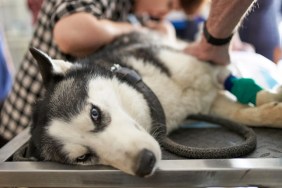Scientists have discovered that brain tumors in humans and dogs share similar genetic characteristics. This breakthrough research was conducted by a team from the Texas A&M School of Veterinary Medicine & Biomedical Sciences (VMBS), Baylor College of Medicine, and Texas Children’s Hospital. Their findings, published in Acta Neuropathologica, reveal significant similarities between meningiomas — the most commonly occurring brain tumor in both species.
Scientists discover meningiomas in dogs are similar to human brain tumors
The collaborative study examined 62 canine meningiomas from 27 different dog breeds, making it the most comprehensive investigation into the gene expression profiles of these tumors in canines. “The discovery that naturally occurring canine tumors closely resemble their human counterparts opens numerous avenues for exploring the biology of these challenging tumors,” stated Dr. Akash Patel, who is an associate professor of neurosurgery at Baylor College of Medicine. He is also the principal investigator at the Jan and Dan Duncan Neurological Research Institute (Duncan NRI) at Texas Children’s Hospital — according to PEOPLE.
Contributing to the study were Dr. Jonathan Levine, a professor at VMBS, Dr. Tiemo Klisch, an assistant professor at Baylor College of Medicine, and Dr. Beth Boudreau, an assistant professor at VMBS, who played a pivotal role in the research. This study builds on previous work that found genetic parallels between gliomas in humans and dogs, further solidifying the belief that canine brain tumors can serve as effective models for human brain tumors.
“We ended up agreeing to provide Patel with canine tumor samples we had worked years and years to archive, to see if he could isolate the RNA, which is not always easy to do,” stated Levine, adding, “Our team also provided Dr. Patel with key clinical outcome data, including responses to certain treatments.”
As the team eyes future developments, the planning and funding of clinical trials, which are intricate and time-consuming processes, are already on the horizon. The primary goal is to create useful results for both human and veterinary medicine by facilitating access to cutting-edge therapies through clinical trials.









